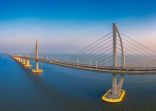Over the trailing three years, a mere eight out of 114 Asia ex-Japan funds available to Hong Kong and Singapore retail investors have managed to beat the MSCI Asia ex-Japan index return of 51.57%.
Fund managers might distinguish themselves by projecting a superior understanding of macroeconomic trends, an uncanny ability to time market entry or exit points, or a disciplined investment process.
However, perhaps a more typical claim – which was asserted many times during recent FSA Fund Awards conversations – is stock-picking capability based on detailed bottom-up analysis, onsite company visits and a network of local knowledge.
Unfortunately, the results of those efforts to discover an undervalued gem or spot the next rising star have been disappointing, at least over the time horizon that Asia investors tend to gauge.
The worst four performers over a three-year period were funds that focus on capital growth among small- and mid-cap Asian companies. Their diverse holdings range across “hot” growth sectors in technology, leisure and healthcare. The intensive research required presumably explains the higher ongoing charges figures (OCF).
For instance, the second poorest performer over three years, the Schroder ISF Asian Smaller Companies has an OCF of 2.40%, compared with a 1.86% OCF payable on the Schroder ISF Asian Opportunities Fund — which is the second best performer.
In contrast, the latter has large holdings in regional heavy-weights such as Taiwan Semiconductor Manufacturing, Tencent, Samsung Electronics, AIA Group and Alibaba.
Looking at the past five years, the Asian Opportunities Fund has also outperformed the small-cap fund in each of the discrete calendar years.
Shifting styles
In fact, the Asian Opportunities Fund’s mainly large-cap portfolio is similar to the other four best performers: JP Morgan Asia Growth and the three Fidelity funds.
Among these, only one – the JP Morgan Asia Growth fund – has outperformed the index in each of the discrete twelve-month periods over the trailing three years.
For those discreet 12-month periods, the number of outperformers in the category is more impressive: 44 funds beat the index from February 2018 to February 2019; 23 from February 2017 to February 2018; and 33 from February 2016 to February 2017.
According to Luke Ng, senior vice president, research at FE Advisory Asia, the apparent discrepancy lies in how rapidly the style-drivers of the Asia ex-Japan markets shift.
First, cyclical stocks drove the market; in the following year growth stocks and momentum powered it higher; and in the last 12 months, defensive stocks played best, especially during the turbulent final quarter of 2018.
In these conditions, it is hard for a fund to outperform the index consistently, unless it is prepared to chop-and-change its style.
Top 5 performers benchmarked vs MSCI Asia ex-Japan
| Fund |
3-year cumulative return % |
Annualised volatility % |
| JP Morgan Asia Growth |
+66.49 |
16.21 |
| Schroder ISF Asian Opportunities |
+55.77 |
15.52 |
| Fidelity Asia Pacific Opportunities |
+55.18 |
12.98 |
| Fidelity Asia Focus |
+54.17 |
14.44 |
| Fidelity Asian Special Situations |
+53.63 |
14.22 |
Bottom 5 performers benchmarked vs MSCI Asia ex-Japan
| Fund |
3-year cumulative return % |
Annualised volatility % |
| Macquarie Asia New Stars |
+0.72 |
13.68 |
| Schroder ISF Asian Smaller Companies |
+1.41 |
11.62 |
| Allianz Little Dragons |
+8.84 |
14.18 |
| Manulife Asian Small Cap Equity |
+12.51 |
15.21 |
| Hamon Asian Market Leaders |
+13.48 |
16.91 |
| MSCI Asia ex-Japan |
+51.57 |
15.15 |
| Sector average |
+34.24 |
13.17 |
Source: FE Analytics (to 8 February 2019 in US dollars)
The top and bottom performer vs the sector and the MSCI Asia ex-Japan Index

Source: FE Analytics. Three-year cumulative return to 8 February 2019 in US dollars.

















